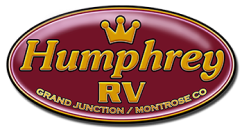RVing Tips
RVing Tips with Humphrey RV
- 1. Whenever possible, use existing campsites. Camp on durable surfaces and place tents on a non-vegetated area.
- 2. Do not dig trenches around tents.
- 3. Camp a least 200 feet from water, trails and other campsites.
- 4. Pack out what you pack in. Carry a trash bag and pick up litter left by others.
- 5. Repackage snacks and food in baggies. This reduces weight and the amount of trash to carry out.
- 6. For cooking, consider using a camp stove instead of a campfire. Camp stoves leave less of an impact on the land.
- 7. Observe all fire restrictions. If you must build a fire—use existing fire rings, build a mound fire, or use a fire pan.
- 8. Use only fallen timber for campfires. Do not cut standing trees. Clear a 10-foot diameter area around the site by removing any grass, twigs, leaves and extra firewood. Also make sure there aren’t any tree limbs or flammable objects hanging overhead.
- 9. Allow the wood to burn down to a fine ash, if possible. Pour water on the fire and drown all embers until the hissing sound stops. Stir the campfire ashes and embers until everything is wet and cold to the touch. If you don’t have water, use dirt.
- 10. Detergents, toothpaste and soap harm fish and other aquatic life. Wash 200 feet away from streams and lakes. Scatter gray water so it filters through the soil.
- 11. In areas without toilets, use a portable latrine if possible, and pack out your waste. If you don’t have a portable latrine, you may need to bury your waste. Human waste should be disposed of in a shallow hole six to eight inches deep at least 200 feet from water sources, campsites or trails. Cover and disguise the hole with natural materials. It is recommended to pack out your toilet paper. High use areas may have other restrictions, so check with a land manager.
- 12. Following a trip, wash your gear and support vehicle to reduce the spread of invasive species.
